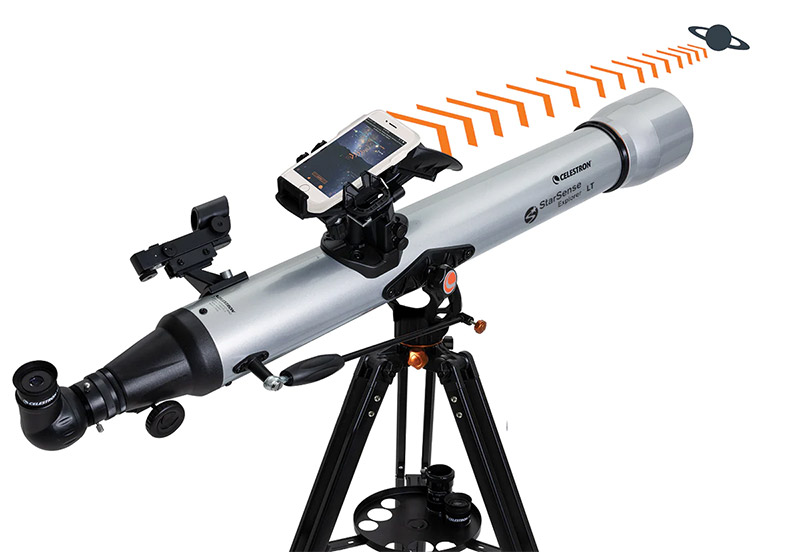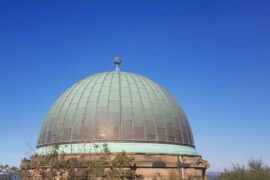It is not necessary to spend a fortune to enjoy the wonders of the night sky. There are many budget telescopes available to beginners and hobbyists. As a matter of fact, there are more options in these price ranges than in the professional equipment area.
But choosing the right device can be a challenge if you are a newcomer. There are many types of telescopes with different specifications, prices, and brands. Figuring out which one is the best for you can be overwhelming.
That’s where this guide comes in.
I have selected the best budget telescopes in each category for you and organized all the information that you need to know into an easily digestible article.
How these telescopes were selected
I chose five different categories that cover the most common types and use cases. These are refracting telescopes, Newtonians, travel, computerized, and telescopes for kids.
The first 2 (refracting and Newtonian) are types of telescopes. I’ll explain a bit about their respective pros and cons in each write-up.
The budget telescopes on this list have to meet the following requirements.
- They must have a great price-to-value ratio
- They must be considerably better than their direct competition
- Must have great optics
- Build quality, ease of use, and included accessories were also considered
I have personally tested all the recommended telescopes and compared them side to side with similar options.
While I’m not a professional reviewer and don’t have access to every model out there, I’ve been observing the sky and using telescopes for more than ten years and I’m a science communicator. You can learn more about my journey on the about page.
Best budget telescopes
Best budget refracting telescope

Refracting telescopes are the most common recommendation I give to people looking to get into stargazing for the first time. They don’t require any maintenance, are easy to use, and are small enough to carry on a trip if necessary.
The minimum aperture (diameter of the main lens) I recommend for a hobbyist telescope is 70mm. Less than that and you will not even be able to see all the planets in the Solar system and your experience will be almost limited to observing the Moon and Mars.
It is great news then that the 70mm aperture range is also the best one when you are looking for a budget telescope and where you will find some of the best aperture to price ratio. This is because there is a lot of competition in this category and with so many options to choose from manufacturers have to offer good prices to stand out.
The Celestron AstroMaster 70AZ fits exactly the description. It is a 70mm telescope with a focal length of 900mm and an AZ mount. What does that mean?
The 70mm of aperture will allow you to see all the planets in the Solar system. It is great for looking at the moon as you will be able to see all the major craters. But it can also be used to see some deep space objects like the brighter galaxies and nebulas. There are some photos and a better description in this article about what you can expect from a 70mm telescope.
The “AZ” in the name means it comes with an Alt-Azimuth mount (the thing that connects the tripod to the tube and controls the movement). AZ mounts are the easiest to use as they are basically point-and-shoot.
The included accessories are very standard. A 20mm and a 10mm Kellner eyepieces which are decent.
In conclusion, if this is your first telescope and you are looking for something versatile and very price-friendly the best options are this or the Newtonian below. The trade-off is that this is easier to use and doesn’t require maintenance while the Newtonian does need maintenance and has a steeper learning curve but offers more power.
Best budget Newtonian telescope

Newtonian (also called reflectors) telescopes use mirrors instead of lenses like refractors. Thanks to this, they can be manufactured in larger sizes and they have a better price per inch of aperture.
The disadvantage, as mentioned above is that they require maintenance as the mirrors have to be aligned (collimated) every few months and they need to be cleaned as the tube is open.
Check out this article on the pros and cons of reflecting telescopes for more on that.
But if you are willing to do that, the views that you are going to get are worth the trouble. The AstroMaster 114EQ, as the name suggests, has an aperture of 114mm. The level of detail that you can get compared to a 70mm refractor is significant.
For example, when looking at Saturn, you are going to be able to see the separation between the planet and the rings. On Mars, you might get enough detail to distinguish the poles and certain regions of its surface. And when it comes to deep-space objects, you will get more and better colors as well as being able to see objects farther away from Earth.
The EQ mount that it comes with can be harder to learn to use for beginners as you will have to learn to deal with latitudes and right ascension. The good news is that this makes it more precise and more suitable for tracking moving objects, which will allow you to get started with astrophotography if that’s something you want to explore.
The mount is also very sturdy which is necessary because the tube is heavy and requires good support.
While there are cheaper entry-level Newtonians, the mounts in those tend to be weak (or they come with AZ mounts). The manufacturing quality of the mirrors also starts to matter more and more the larger they get and the difference in quality starts to be noticeable when you compare them side by side. That’s why I went with the AstroMaster 114EQ which is from a proven brand and has been tested by astronomers for years with good results.
Best budget travel telescope

If you want to go into very low-budget telescope territory then take a look at the “travel” category. Even though these kinds of instruments are designed with portability in mind, some people just use them as their main telescope because their price is hard to beat.
The Celestron Travel Scope is a light device with a small body. It weighs barely 4 lbs (1.8 kg) when fully assembled. And yet, its optics are very decent.
While it is definitely limited in terms of size and specs, the quality of the lenses is great. I could almost bet they are the same lenses used in the AstroMaster 70AZ and the PowerSeeker 70AZ.
The limiting factor is going to be the focal length which is only 400mm. This is going to result in a naturally narrow field of view which isn’t great for looking at galaxies comfortably but is perfectly fine for planetary viewing. The maximum magnification is going to be the same as the AstroMaster 70AZ because that is determined by the aperture only.
The included tripod is retractable so it can fit in the backpack too. It can feel a bit unstable, especially if you take it into the field but it is not too bad.
The TravelScope 70mm DX is a fun entry-level device. It is certainly limited in certain areas but it does a good enough job to be a solid purchase and the price is great.
The 70mm version is very often sold out, but there is a similar 80mm model or the old model that is the same but doesn’t include a smartphone adapter.
Best budget computerized telescope

On the high-end of the telescope market, there are devices that can search and track stars, planets, and any object automatically. These scopes have a built-in computer and sky-mapping software that can do all the hard work for you.
The problem is, they aren’t exactly cheap and none of them really fall in the “budget telescope” category.
But here’s the next best thing. An app-assisted telescope, the StarSense Explorer LT 80AZ.
Instead of having its own computer, the StarSense app uses your phone to map out the sky. You do this by attaching your phone to the dock in the telescope and running the included app. Once your telescope is aligned, you will be able to see on the screen an overlay with the names of the objects you are looking at in the sky. You can also search for specific objects and the app will guide you on how to point the telescope at them.
While moving and tracking is still up to you, the technology in the StarSense telescopes really makes things easy for beginners. It removes the need to learn to star-hop or follow star maps to find the objects you want to observe.
As for the actual telescope, it is an 80mm refractor with an AZ mount. The quality of the lenses is great and the extra 10mm of extra aperture it offers when compared to the standard 70mm scopes results in images with more detail.
I’ve written in-depth reviews of this model and the 114mm reflector if you want more details.
Even though the StarSense LT 80AZ is the priciest telescope on this list I believe it is worth the investment for the sky mapping functionality.
Best budget telescope for kids

I’ve recommended this model before in our post about best telescopes for kids.
It is hard to find a serviceable telescope in the kid’s category. They are generally manufactured by toy brands instead of optic instrument companies. And as result, they pay little to no attention to the quality of the lenses.
That is not the case with this model.
The secret is this Emarth scope is in reality just a rebrand. You will find it under 2 or 3 different names but it is easy to recognize for the metallic blue exterior. The Emarth or the Amekie usually have the best price available. It is manufactured by an Asian factory that does make optic devices.
As I mentioned earlier, 70mm is the least aperture size that I recommend for a beginner’s telescope. And this model has exactly that at the price of a lower model.
The views are honestly nothing spectacular. It is the most basic device that I would actually call a telescope instead of a toy. But it is decent enough to get a good view of the Moon. Mars, Jupiter, and Saturn should be visible although you won’t get much detail out of them. As for other objects, you will be able to see a few galaxies, a few nebulae, and star clusters but go with very low expectations. This is definitely a “my first telescope” type of device.
It makes for a great gift to a kid. It is also useful as a terrestrial telescope if you want to get into wildlife watching. I just wouldn’t recommend it for anyone above 12.
If for some reason it is sold out, look for it under “ecoopro” or “aomekie”. It is the same model.
Enjoyed this article?
Get daily 10-minute PDFs about astronomy to read before bed!
Sign up for our upcoming micro-learning service where you will learn something new about space and beyond every day while winding down.







